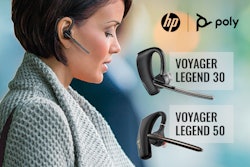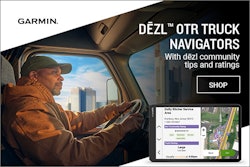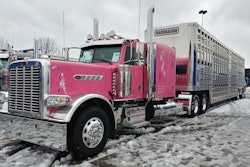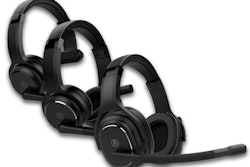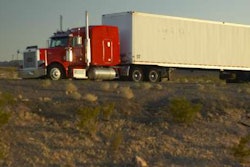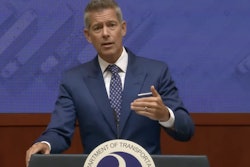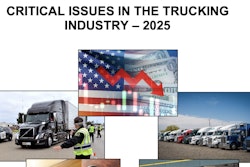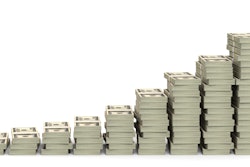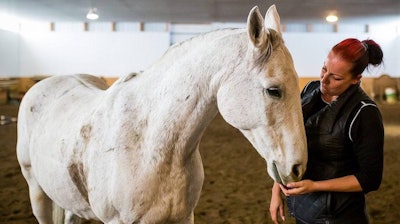
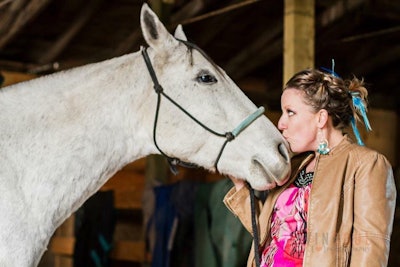 Truck driver Maggie McCaskie races horses and trains dogs in her downtime. (Image Courtesy of Maggie McCaskie)
Truck driver Maggie McCaskie races horses and trains dogs in her downtime. (Image Courtesy of Maggie McCaskie)Canadian truck driver Maggie McCaskie’s lifelong love for animals led her to cattle hauling almost 10 years ago, and she hasn’t looked back.
McCaskie first got her license working with an LTL company in October 2008 and by the following January, she had transitioned into cattle hauling. She’s been doing that ever since. She had previous experience working on dairy farms and working around livestock, so cattle hauling seemed like a natural fit.
A huge part of the job is “the husbandry that’s involved with it and looking after the animals,” McCaskie said. “I’m the first one to yell at somebody if they’re overhandling. I love the handling of the animals.”
McCaskie drives for Vanee Trucking out of Alberta and runs in a fleet-owned 2011 Peterbilt 389. Her rig has a 550-hp Cummins with an Eaton 18-speed with 3:91 rears and sits on a 283-inch wheelbase. McCaskie’s regular runs take her across southern Alberta, British Columbia, in Canada and Idaho and Washington state. Her company often sends out several of its drivers on the same route at a time, with the drivers running together.
 McCaskie drivers this 2011 Peterbilt 389, owned by Vanee Trucking. Vanee’s mechanics stretched the frame and had it repainted, added new drop skirts, lights, stacks, visor, fenders, headlights, and bumper. (Image Courtesy of Maggie McCaskie)
McCaskie drivers this 2011 Peterbilt 389, owned by Vanee Trucking. Vanee’s mechanics stretched the frame and had it repainted, added new drop skirts, lights, stacks, visor, fenders, headlights, and bumper. (Image Courtesy of Maggie McCaskie)“There’s about 10 of us within a 10-mile line right now all chatting and talking to each other,” McCaskie said. If an issue pops up with the trailer or cattle, this system of running together means a familiar face is always nearby to help.
McCaskie enjoys the camaraderie this gives her with her coworkers. They also run to a lot of small places, letting her build a more personal connection with the fleet’s customers.
“We do a lot of really small places so you do have that one-on-one with your customers and that constant communication. You get to know people,” McCaskie said. “It’s so much nicer to have that personal connection.”
Cattle hauling requires drive and stamina to put your personal needs on hold to do what’s right for the animals, McCaskie said. Women in the industry also face challenges.
“Women have a hard time in this job. You don’t go to a feedlot and expect to have a bathroom around,” for example, McCaskie said.
McCaskie recommends newcomers in livestock hauling listen to the old hands who have been in the industry for a while.
“The best advice I could ever give anybody is to listen to the older guys. Ask a lot of questions and listen to the guys that have been doing it for years. They’re the only ones that can teach you,” McCaskie said.
When she’s not trucking McCaskie still spends her time with animals. McCaskie owns a thoroughbred/quarter horse and she does some jumping with him. She boards her horse at a racing stable, and she regularly helps out at races and the stable’s horses. She also is taking courses to become a registered dog trainer.
“I love helping other people with their dogs,” McCaskie said. “It’s so fun to help other people, especially when they’re receptive to how to get things to work for them.”

